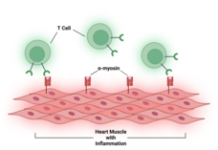
The pace of progress in cancer research keeps getting faster and faster. However, the results of this research can take time to reach the medical community. The ASCO Plenary Series is a program developed by the American Society of Clinical Oncology (ASCO) to help speed the delivery of high-impact cancer research. In this series, cancer care providers gather online to learn about new, carefully selected research and discuss the study results with their colleagues.
The November 2023 session in the ASCO Plenary Series features these studies:
Targeted therapy drug CMG901 may be an option to treat advanced stomach or gastroesophageal junction cancer that expresses claudin-18.2 (CLDN18.2)
Who does this study affect: People with advanced gastric or gastroesophageal junction cancer that is CLDN18.2-positive and has been previously treated.
What did this study find: A phase 1 clinical trial found the new targeted therapy drug CMG901 meets safety standards and slows the growth of advanced, CLDN18.2-positive gastric and gastroesophageal junction cancers that have been previously treated. Gastric cancer begins in the stomach. Gastroesophageal junction cancer is a rare cancer that begins where the stomach and esophagus meet.
Phase 1 clinical trials are an important part of the drug development process. During this phase, researchers learn about the side effects a new drug causes and how much of the drug should be given, which is called dosing. It is usually the first time a new drug has been taken by people. During phase 1 studies, volunteers are given a very low dose of a drug. If the drug does not cause dangerous side effects, a higher dose is given to the next group of volunteers. Results may also be collected about how well the drug works to treat the cancer. Learn more about the phases of clinical trials.
In this study, researchers wanted to study a newly developed targeted therapy drug, CMG901. Currently, only HER2-positive gastric and gastroesophageal cancers can be treated with targeted therapy. But only around 20% of these cancers are HER2-positive. A larger percentage (between 34% and 86%) have moderate to strong expression of the protein CLDN18.2.
CMG901 is an antibody-drug conjugate that targets the CLDN18.2 protein, which is found in normal and cancerous gastric tissue. Gastric and gastroesophageal junction cancers that express CLDN18.2 have a higher amount of this protein than healthy cells. Antibody-drug conjugates are a type of targeted therapy that combine a monoclonal antibody with other drugs that treat cancer.
This phase 1 study from China included 2 parts. Both parts included people with advanced gastric or gastroesophageal cancer that had been previously treated.
-
Part A: This was a dose-escalation phase. The dose of CMG901 was increased to find the maximum tolerated dose (MTD). The MTD is reached when more than a third of participants experience severe side effects that make them stop taking the treatment. Patients in part A did not need to have cancer that expressed CLDN18.2 and they received doses of CMG901 between 0.3 and 3.4 mg/kg.
-
Part B: This was a dose-expansion phase, which is done to study a more specific group of people. During part B, participants had to have CLDN18.2-positive cancer. They received doses of CMG901 between 2.2 and 3.0 mg/kg.
During Part A, the MTD was not reached. This means that more than a third of the participants did not experience severe side effects that made them stop taking treatment.
A total of 113 participants (6 people from Part A and 107 people from Part B) received CMG901 in doses ranging from 2.2 to 3.0 mg/kg. Of these, 59 were men and 54 were women, and the median age was 56 years. The most common side effects caused by the treatment were anemia (62.8%), vomiting (57.5%), and hypoalbuminemia, which is low levels of albumin (57.5%). The most common severe side effects that were reported were a low neutrophil count (18.6%) and severe anemia (13.3%).
Of the 113 people who received doses between 2.2 and 3.0 mg/kg, 89 with CLDN18.2-positive cancer had at least 1 post-treatment scan. The overall response rate for this group, which is the number of participants whose tumor responded to the treatment, was 32.6%.
The participants were observed for a median of nearly 6 months. The median progression-free survival (PFS) for all CLDN18.2-positive patients was 4.76 months. Progression-free survival is the amount of time during treatment that the cancer does not grow or spread. The median is the midpoint, meaning half of the people had a PFS of less than 4.76 months and half had PFS of more than 4.76 months.
What does this mean for patients? CMG901 showed that it could be safely given to people with previously treated, advanced CLDN18.2-positive gastric and gastroesophageal cancer. Some tumors also responded to the treatment. Future clinical trials may explore whether CMG901 is more effective at treating these cancers than current, standard treatments.
“Based on the results in this study, it was found that CMG901 was active in this heavily pretreated population with a manageable safety profile. CMG901 appears to be a promising therapeutic agent for CLDN18.2-expressing gastric and gastroesophageal junction cancers – an area of high unmet medical need.”
— lead study author Rui-hua Xu, MD, PhD
Sun Yat-sen University Cancer Center
Guangzhou, China
Who does this study affect: People with advanced stomach cancer, esophageal cancer, and gastroesophageal junction cancer.
What did this study find: Results from the phase 2 EDGE-Gastric study have shown that a new combination of immunotherapy and chemotherapy causes advanced, untreated cancers of the stomach, esophagus, and gastroesophageal junction to slow or shrink. The gastroesophageal junction is where the stomach and esophagus meet. Cancers that arise in the gastroesophageal junction are rare and may be treated with therapies for stomach or esophageal cancer.
Phase 2 studies are done to see if a treatment is safe and how well it works. If a phase 2 study shows a treatment works and is safe, then a phase 3 clinical trial can be done to see if the treatment is as effective as the current, standard treatments. Learn more about the phases of clinical trials.
In this study, the researchers wanted to see if these cancers would respond to treatment with a chemotherapy combination called FOLFOX plus immunotherapy drugs that target the PD-1 protein and an immune cell receptor called TIGIT. The PD-1 inhibitor was zimberelimab. The TIGIT inhibitor was domvanalimab. Both immunotherapy drugs used in this study are experimental and not part of standard care. FOLFOX is a known chemotherapy combination that includes leucovorin (folinic acid), fluorouracil (5-FU), and oxaliplatin (Eloxatin).
There were 41 participants in this study. About half of the participants lived in Asia, and the other half lived in other locations worldwide. More than half (63%) of the participants had stomach cancer. They received treatment for a median of 33 weeks. The median is the midpoint, meaning half received the treatment combination for more than 33 weeks and the other half for less than 33 weeks. At the time of data analysis, 31 participants were still on the treatment regimen.
The researchers found that the cancer slowed, stopped, or shrank in 59% of the participants. This is called the objective response rate. At 6 months, the cancer had stopped growing and spreading in 77% of the participants. This is called progression-free survival. The 15 people in this study whose tumors expressed PD-L1 (the protein that connects to PD-1) at high levels had higher objective response rates (80%) and higher rates of progression-free survival (93%).
The most common treatment-related side effects in this study were neutropenia (56% of patients), nausea (54%), and anemia (27%). Serious side effects arose in 24% of the participants, but none were related to the immunotherapy drugs. There were 13 participants who had to stop treatment because of the side effects from FOLFOX chemotherapy, and 1 stopped treatment because of side effects from immunotherapy.
What does this mean for patients? The combination of FOLFOX chemotherapy plus zimberelimab and domvanalimab shows promise as a first treatment for these advanced cancers due to the combination’s objective response rate and because its side effects are similar to those of standard-of-care treatments. The researchers have begun a phase 3 clinical trial of this combination called STAR-221.
“Preliminary results of this study are encouraging, particularly in patients whose tumors have high expression of PD-L1. However, additional follow up will allow for the evaluation of longer-term efficacy measures, such as progression-free survival and overall survival. Importantly, the safety profile of this new combination is similar to that of anti-PD-1 plus chemotherapy.”
— lead study author Yelena Y. Janjigian, MD
Memorial Sloan Kettering Cancer Center
New York, New York
Like what you’ve read here at Cancer.Net? Sign up for our monthly Inside Cancer.Net e-newsletter and follow Cancer.Net on Facebook and Twitter for news about the latest in cancer care and treatment.









